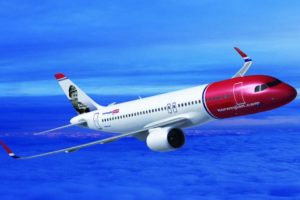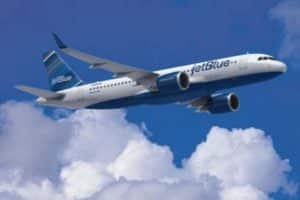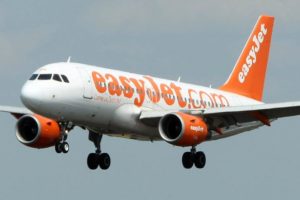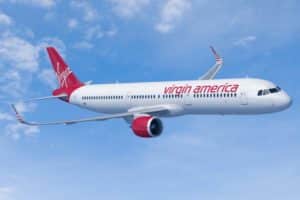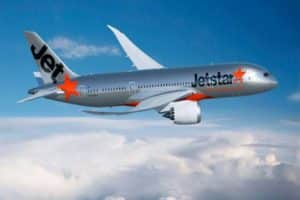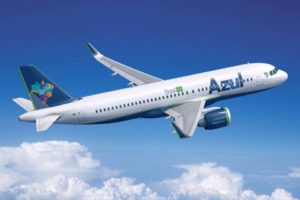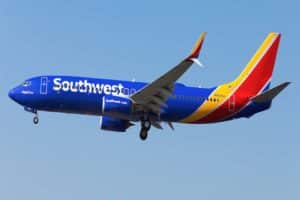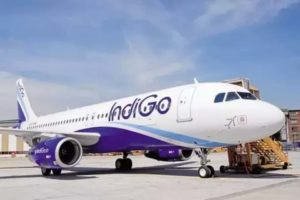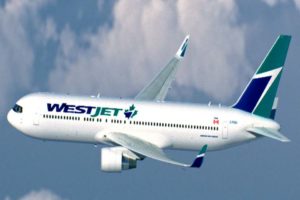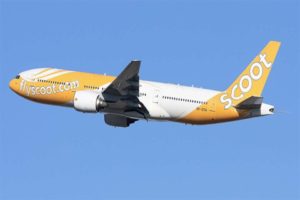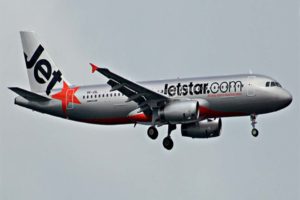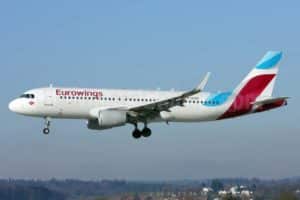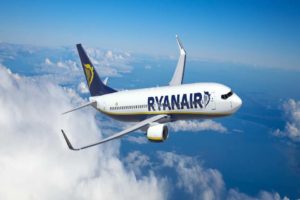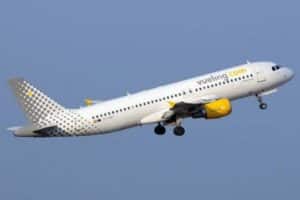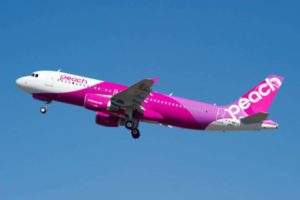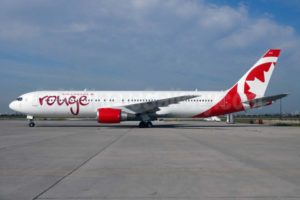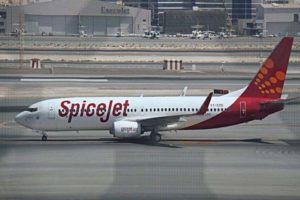Aviation
Top 20 World’s Best Low-Cost Airlines 2017

1. AIRASIA, MALAYSIA
Impressively, AirAsia is the world’s best low-cost airline for the 9th year running. Based in Kuala Lumpur, Malaysia, the airline operates an extensive network covering more than 120 destinations in 26 countries across Asia, Australia and New Zealand, the Middle East and the USA. Just 15 years ago, the airline was a failing state-owned business but was rapidly turned around by CEO Tony Fernandes.
2. NORWEGIAN AIR, NORWAY
Also voted best long-haul low-cost airline and best low-cost airline in Europe, Norwegian Air comes in second on this list. The company flies to more than 100 destinations throughout Europe, Asia, Africa, the Middle East and the USA – making headlines earlier this year when it offered one-way flights between Dublin and New York for just $90 (£69). Its planes are instantly recognizable as they each have a red nose and portraits of famous Scandinavians on their tail fins.
3. JETBLUE AIRWAYS, USA
“You above all” is the reassuring slogan of JetBlue Airways, credited with raising the standards of low-cost carriers in the US thanks to its friendly-service, satellite TV and free snacks. With headquarters in New York, the carrier has routes to 102 destinations across North, Central and South America. The company recently announced plans to remove its schedules from 11 online travel sites to encourage direct bookings, thereby cutting the commission it pays to third parties.
4. EASYJET, UK
No-frills British airline easyJet burst onto the scene in 1995, launched by self-titled ‘serial entrepreneur’ Stelios Haji-Ioannou. It’s now the second-largest airline in Europe by number of passengers, behind Ryanair, carrying around 73 million people annually. EasyJet flies to more than 100 destinations throughout Europe and North Africa.
5. VIRGIN AMERICA, USA
Virgin America prides itself on offering a top-notch service at an affordable price. Even passengers in the main cabin can expect mood lighting, snacks, power outlets, wi-fi, leather seats and video touchscreens in every seatback. Those flying in Select and First Class have more legroom and premium meals. Virgin America flies to 21 destinations across the US, plus three in Mexico.
6. JETSTAR AIRWAYS, AUSTRALIA
Jetstar Airways is based in Melbourne and promotes itself as “Australia’s No. 1 Low Fares Airline”. Founded in 2004, the company flies to destinations throughout Australia and New Zealand and also has routes to China, Japan, Vietnam, the US, Thailand, Malaysia, Fiji, Indonesia and the Cook Islands. Jetstar Airways is wholly owned by Qantas Airways, which offers a more premium service.
7. AIRASIAX, MALAYSIA
Long-haul and low-cost carrier AirAsiaX has flown over 19 million passengers since it launched its maiden flight 10 years ago. It currently serves 23 destinations across Asia, Australia, New Zealand, the Middle East and Africa. Earlier this year, founder Tony Fernandes ended speculation that the airline would return to Europe and start flying to the US, confirming the company will remain focused on Asia only.
8. AZUL LINHAS AÉREAS BRASILEIRAS, BRAZIL
Azul Linhas Aéreas Brasileiras is the latest success of co-founder David Neelemen, who also helped build JetBlue and WestJet. Founded in 2008, the São Paulo-based budget airline’s success is largely down to the fact it began by targeting under-served cities throughout Brazil. Its fleet of 125 jets now fly to more than 100 destinations throughout Argentina, Bolivia, French Guiana, Portugal, the USA, and Uruguay.
9. SOUTHWEST AIRLINES, USA
The world’s largest low-cost carrier, Southwest Airlines has more than 700 Boeing 737 jets and operates more than 4,000 flights a day in peak season. The Dallas-based airline flies to around 100 destinations across the US, South America and the Caribbean.
10. INDIGO, INDIA
New Dehli-based IndiGo is the largest airline in India in terms of passengers carried – a total of 41 million people last year. One of the fastest-growing aviation companies in Asia, it’s about to add another 400 Airbus jets to its current fleet of 100. IndiGo flies to 46 destinations, most of which are domestic, but also airports in Nepal, Oman, Qatar, Singapore and Thailand, along with Dubai and Sharjah in the United Arab Emirates.
11. WESTJET, CANADA
Launched in 1996, WestJet was originally a small regional airline but has grown to become the second-largest carrier in Canada. The cost-conscious company now flies to more than 100 destinations throughout Canada, Central America, Mexico, Europe and the Caribbean – and plans to expand into Asia and South America in the next few years.
12. SCOOT, SINGAPORE
Owned by Singapore Airlines, Scoot was launched in 2012. The company offers a no-frills, low-cost service alongside business class ‘ScootBiz’, which offers extra legroom and larger, leather seats. Scoot operates services in Singapore, Honolulu, China, Malaysia and the Gold Coast of Australia.
13. JETSTAR ASIA, SINGAPORE
Jetstar Asia, an off-shoot of Jetstar Airways, flew into the skies in 2004. A latecomer to the budget aviation market, the business differentiated itself from other airlines by traveling within a five-hour radius of Singapore, while its competitors didn’t go beyond four hours. Jetstar Asia travels to around 100 destinations across India, China, Malaysia, Thailand, Singapore, Cambodia, New Zealand and Australia.
14. EUROWINGS, GERMANY
Low-cost carrier Eurowings flies to more than 150 destinations throughout Europe as well as Thailand and South Africa. The company offers passengers three fare options for both short and long-haul flights: Basic (flight only), Smart (preferred seating, food and luggage included) and Best (premium seating and legroom, à la carte catering and in-flight entertainment). Its parent company, Lufthansa, recently bought over 81 of Air Berlin’s plane, increasing the Eurowings fleet to 210 aircraft.
15. RYANAIR, IRELAND
Dublin-based Ryanair is Europe’s largest airline in terms of passenger numbers. The company serves 34 countries throughout the continent as well as Morocco and Israel. The budget airline made the list despite cancelling thousands of flights this summer after a ‘mess-up’ in how it scheduled time off for pilots. Customer satisfaction improved from 2014 when Ryanair allowed customers two free carry-on bags. But, from January 2018, passengers will be charged for the privilege.
16. VUELING AIRLINES, SPAIN
Spain’s second-largest carrier, Vueling flies to over 160 destinations throughout Europe, Africa and Asia. The company, based in Barcelona, offers three fares: Basic, Optima (allocated seating and check-in luggage) and Excellence (front row, allocated seating, priority boarding, larger luggage allowance). The airline flew 2 million passengers in the UK during the summer 2017, an 8% increase from the summer season of 2016.
17. TIGERAIR, SINGAPORE
Tigerair Singapore merged with Scoot in July 2017 and now operates under that name, but before all this it was voted the 17th best low-cost airline in the world. The economy service continues to operate flights throughout southeast Asia, Bangladesh, China and India. (This entry does not refer to Tigerair Australia, which is a different operation entirely.)
18. PEACH, JAPAN
Japanese airline Peach operates 14 domestic routes and flies to 15 international destinations across Hong Kong, China, Thailand, Taiwan and South Korea. Passengers can chose between three fares: Simple, Value and Prime, with the more expensive options offering allocated seats, additional legroom and bigger luggage allowances.
19. AIR CANADA ROUGE, CANADA
A low-cost subsidiary of Air Canada, Air Canada Rouge began operating in 2013 with just four aircraft. The company now has 49 planes and flies to more than 90 popular destinations throughout Canada, Europe, the Caribbean, South America and the USA. The airline is currently in the process of adding high-speed wi-fi to its entire fleet. All Airbus 319s will be equipped by spring, followed by its Airbus 321s and Boeing 767s later in 2018.
20. SPICEJET, INDIA
In 2014, Indian airline SpiceJet was about to fold – and was even forced to cancel 2,000 flights because it couldn’t afford to pay for oil. Its fortunes changed when chairman Ajay Singh took over and it’s now the third-largest carrier in the country. SpiceJet now operates more than 300 flights to 55 destinations throughout India, China, Thailand, Saudi Arabia, the United Arab Emirates, Afghanistan, Nepal and Sri Lanka.

Aviation
Boeing, Antonov to Collaborate on Defense Projects

– MOU represents Boeing’s commitment to work with Ukrainian industry
– Includes exploring opportunities for collaborating on in-country support of Unmanned Aerial Systems
A Memorandum of Understanding was signed today by Boeing and Antonov Company to investigate potential collaboration on defense-related projects.
“We’re happy to keep collaborating with the Antonov Company to help Ukraine’s economic development and expansion,” stated Ted Colbert, CEO and president of Boeing Defence, Space, & Security.
Airbus and the Antonov An-225: The Best Partnership:Click here
“This agreement demonstrates our ongoing efforts to find more opportunities to work with Ukrainian industry, which was underscored by our signing of the Ukrainian Defence Industry Compact earlier this year.”
The areas of potential collaboration identified in the agreement consist of training, logistical support and overhaul services for tactical Unmanned Aerial Systems utilized by the Ukrainian Armed Forces, which includes the ScanEagle. In addition, the companies will also explore opportunities for Antonov to provide engineering support to Boeing.
The six largest cargo aircraft ever built in the aviation industry:Click here
“A strong, innovative, and efficient defense industry is key to sustainable economic development and national security, and we are extremely excited to collaborate with Boeing,” said Ievhen Gavrylov, CEO of Antonov Company.
This agreement brings a whole new level of opportunity to implement the latest and most effective solutions – in addition to the possibility of future projects with Boeing in the aerospace and defense industry.”
-

 Travel1 week ago
Travel1 week agoAir India to Expand US Operations with Three New Routes After a Decade
-

 Travel2 weeks ago
Travel2 weeks agoWhy We Should Avoid These Stamps in a Passport
-

 Airlines1 month ago
Airlines1 month agoInvestigations Reveal Fake Chinese Titanium in Boeing and Airbus Jets
-

 Tech4 weeks ago
Tech4 weeks agoChina’s CATL Plans 1,800-Mile Electric Plane Launch by 2027
-

 Airport3 days ago
Airport3 days agoTop 10 Largest Airports in the World by Size
-

 Aerospace4 weeks ago
Aerospace4 weeks agoChina’s Fighter Jets Turn Wings into Autonomous Drones
-

 Airlines4 days ago
Airlines4 days agoAir India Rolls Out A350s for Delhi-New York JFK and Newark Routes
-

 Defence3 weeks ago
Defence3 weeks agoBoeing Enhances Chinook with New Engines and Block II Upgrades at $96 Million


